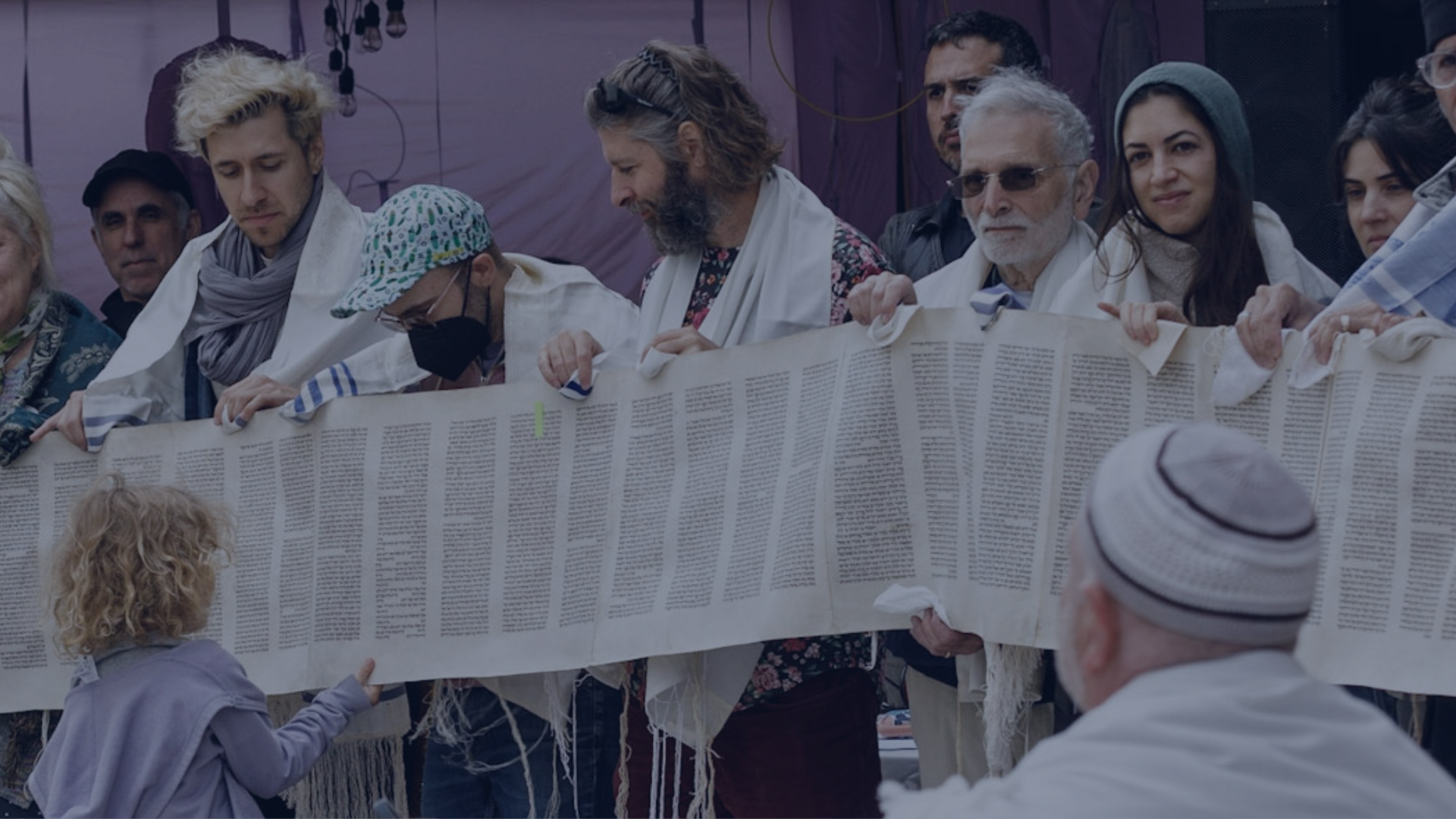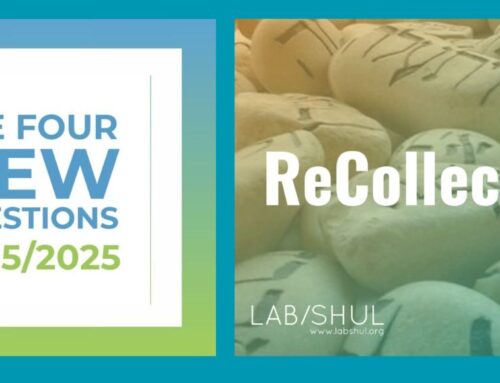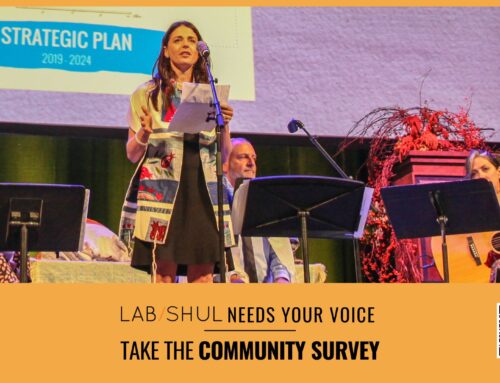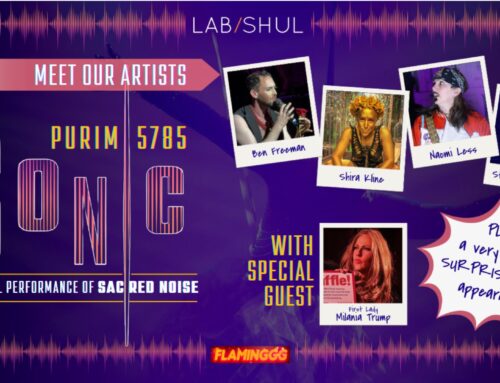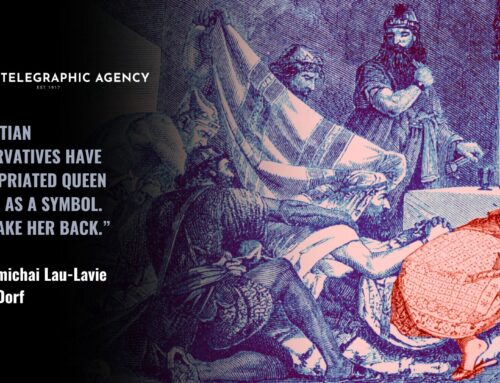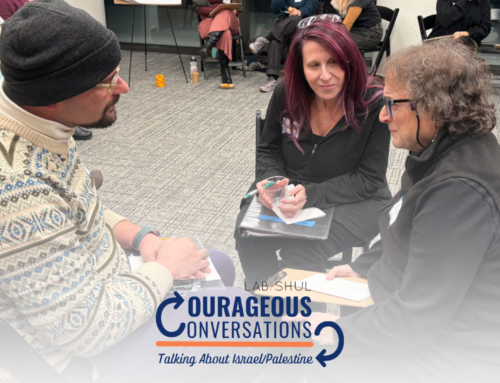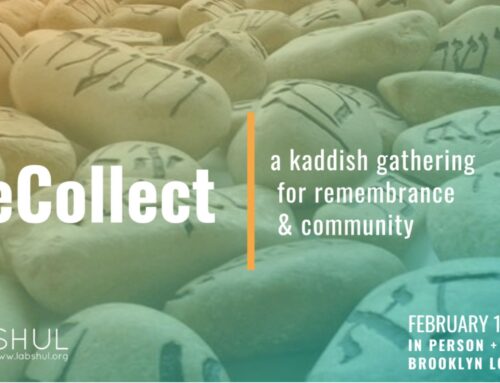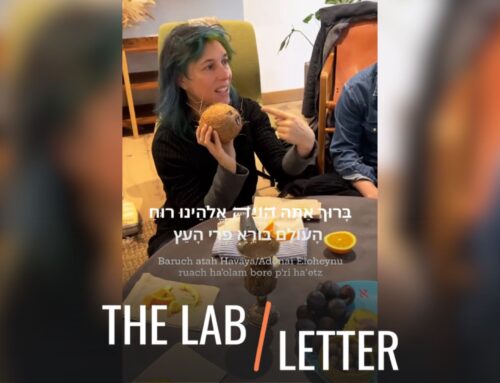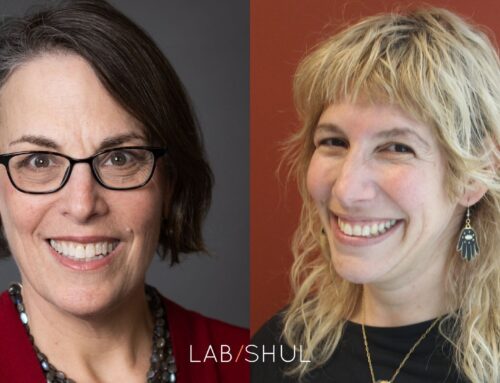Will we dance again? Will I dance this coming holiday?
The final High and Holy Day of this season will be celebrated this week across the Jewish world: Simchat Torah, the Joy of Torah. But this year’s joy is not so simple.
I’ve been participating in many debates, hearing opinions from around the world—how do we mark this day on which we usually dance seven times in circles to celebrate our sacred story? How do we dance when, on this day a year ago, so many were brutally killed, raped, wounded, traumatized—and taken hostage? How can we dance when so many have yet to return, when so many are mourning, wounded, homeless, hopeless? How can Jews dance to celebrate survival while we mourn with Palestinian friends and neighbors, horrified by the devastating death toll in Gaza, the increasing violence in Lebanon, and the lawlessness in the West Bank? This brutal conflict is claiming all of us.
How can we dance? Many rabbis and leaders in Israel and the U.S., across denominations, insist that we must—because otherwise we give Hamas a win. I get that. Others choose to lift up joy and celebrate that we’re still here, hopeful and alive, no matter what. I’ve seen suggestions for sensitive and creative solutions that offer ritual revisions to still observe this much-beloved holiday, yet also mark the bloody year we’ve just lived through—with more and more bad blood each day.
I will not dance with the Torah this year. For me, it is too soon. I want to mark this day in other ways and invite you to join me and our community. Before I share the details, I want to say something about why this shift matters. Why we can’t keep doing what we’ve been doing and expect to change the world for the better.
It’s not just that I can’t dance with the Torah while so many are suffering—on both sides.
It’s also because, in the name of this sacred story, in the name of this Torah I love, many Jews, including many in leadership positions, including some of my relatives, are justifying this continued conflict, cruel killing, and determination to destroy Palestinian homes and lives. They seek to destroy democracy and build a Jewish state that will not be a welcoming home for many of us. Just this past week, sponsored by Israel’s ruling party, thousands of religious Zionist settlers gathered on the Gaza border, despite protests, to begin planning settlements there, while the Israeli army continues to clear the area. It’s illegal, it’s immoral, and it’s a desecration of our ethical teachings. It’s supremacist Judaism, fueled by racist Messianic zeal combined with a trauma-based victim mentality that has become a victimizing monster—all of it justified by the Torah and God.
Not in my name, not in the name of the Torah that I hold onto, and not in the name of our God.
We can’t refute that the Torah includes passages where God promised the land to our people—from river to sea. It’s right there in the Bible. It’s part of our legacy.
But it’s not the only part, and just because it’s in the holy book – whoever wrote it with whatever agendas – doesn’t mean it must be followed to the letter—especially if it destroys so many lives. What got us this far isn’t what will take us further.
So, how can we accept this text as foolproof sacred—and how can we dance with THIS Torah? I’ll tell you how—and what I plan to do this coming holiday instead of what we’ve always done:
Torah is not just a written scroll or a closed book—the story isn’t over. This is a critical concept that fundamentalists love to ignore.
Torah exists in two forms—the written and the spoken: what we inherited as is (every written word) and what we do with it, as if (every generation’s new interpretation). Both aspects make up one evolving, living Torah. Both these and those are the words of a living God that keeps on changing—just like us.
Beyond the racist, homophobic, misogynistic, and xenophobic aspects of our ancient Torah, cultivated by centuries of patriarchal culture, is a rich legacy of humanitarian justice and love. The core message, right at the heart of the Torah, is to love each other equally, just as we are. Beyond Abrahamic promises of homeland, there is the law to lift up justice and remember what it’s like to be a stranger in a strange land, to always hear and respond to the question: Are we our siblings’ keepers?
It is on us to pick up where the story stops and tell, teach, and dance a new Torah. Innovation is our sacred obligation. It’s always been our challenge and our right.
Simchat Torah was once an innovation—created by Babylonian Jews who chose to read the whole Torah each year and celebrate the end of one cycle and the start of another by dancing seven times in circles. Over time, and it took centuries, the rest of the world joined in this tradition. Perhaps this diaspora-created holiday now calls on us to reimagine how we honor our sacred stories, heal ancestral trauma, and resist repeated tropes of either/or that cost so many lives.
It’s on us to once again innovate, to try out new traditions with the courage to pick up where the written Torah left off, to create new rituals and narratives that don’t prioritize one people over another, that do not justify religious genocide, and that don’t glorify God-given choices that leave millions without dignity, liberty, freedom, and life.
We need a new Torah, new chapters in which all the children of Abraham inherit the land together—refusing the binaries of war and insisting on shared resources. We need a new Torah where all genders are equal, and every life, and every choice, matters. That’s the Torah we want to dance with for the rest of our lives.
It is our obligation to talk back to the Torah we received, with its treasures and traumas, and keep updating it so that we can dance with our ancestors, eye to eye, and with each other, heart to heart, becoming the ancestors who will make our descendants proud of how we shifted, face to face, across the generations—from harm to healing, from who we once were to the ones we want to be.
Will ours be the generation that perpetuates the toxic teachings of our Torah—or will we choose to pick up where the story stops and write the new chapter of reconciliation and repair between the children of Abraham, Sarah, and Hagar? Can we invite Sarah and Hagar to sit and talk together in the new chapter, helping bring about forgiveness and peace?
This vision is not naive and not misguided, but guided by the deepest longing for a Torah of life—written and spoken, alive and loving—that will honor all our legacies and make room for all of us on our shared and holy land. As Rabbi Elchanan Nir wrote in a powerful poem earlier this year: We need a New Torah.
So, this is how I plan to mark this year’s Simchat Torah along with the Lab/Shul community—inviting you to join us:
- On Thursday (10/24/24) at noon, I will co-lead an online ritual to remember all the dead and fallen. We will recite the Mourner’s Kaddish and the Yizkor Prayer of Remembrance together, standing in solidarity with the suffering and sorrow. We will lift each other up. Join us online for ReCollect.
- On Friday (10/25/24) afternoon, in Brooklyn, leading into Shabbat, we will gather for Simchat Torah, and we will once again unscroll the sacred scroll from start to finish, in one big circle, held by our community. But this year, we will shift the way we tell the story—we’ll begin at the end, marking the death of Moses and standing in mourning, then make our way through Torah highlights that remind us how to lift up love and justice—all the way to the first words ever spoken: Let there be light. Join us in Brooklyn for Unscrolled.
We’ll sing, meditate, pray, cry, laugh and light candles for peace. We’ll imagine the next chapter of our story and lift up hope.
However you choose to celebrate Simchat Torah this year, let’s lift up the best in our tradition, talk back to the parts that no longer hold our values, evolve with our wise old Torah, and innovate what’s needed for a new way and a new day that celebrates the sacred stories and sanctity of all life.
Perhaps next year I’ll dance again.
I wish us all healing and hope, courage and compassion, peace and joy—in the coming days and always.

